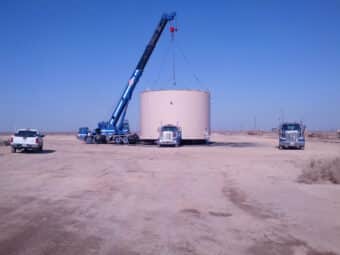Coordinating Your EOP with Jurisdiction Partners
by Roger Mason PhD
Introduction
Emergency operations plans (EOPs) are some of the most essential planning documents a city must develop. Many cities focus on their internal operations and planning priorities, but overlook the bigger issue of how they will operate during a regional disaster. The jurisdictions that surround you are working on their EOPs. How can you coordinate your plans, manage resources, and become self-supporting?
Four planning topics should be considered when developing or upgrading an emergency operations plan: evaluating your jurisdiction partners, understanding your operational area plans, managing resources, and pre-event preparations. By evaluating these topics, you will be a better jurisdictional partner and enjoy a more realistic planning foundation for your EOP.
Evaluating your Partners
The first step is evaluating your partner. Who are they and what do they do? What makes them unique?
There are many types of jurisdictions and entities. There are two types of jurisdictions: general mission and specific mission. General mission jurisdictions operate continually, and their responsibilities continue during a disaster. Examples include local government, public utilities, state agencies. Specific jurisdictions may include airports, school districts, and harbors. A disaster may restrict their normal operations. This may make their resources available during a disaster.
Cities
Local governments are similar from city to city. They provide or contract the same types of services (public safety, public health, public works, and transportation).
Special Districts

State
The State of California has agencies that operate like local governments. These agencies have departments that provide services common to local government. Examples include the California State Universities and University of California campuses who have their own public safety, hazmat, and public works departments.
Federal

Education
School districts often operate with a variety of internal functional departments including public safety and public works. The University of Southern California has public safety including fire protection. These organizations have vehicles, personnel, and resources.
Commercial Entities
Large commercial entities often have functional departments that mirror capabilities in local agencies. These capabilities include emergency operations centers, vehicles, trained personnel, and supplies. A good example is the Southern California Gas Company.
In Burbank, California Warner Brothers and Disney Studios have full emergency operations capabilities and their own fire protection. In Mono County, the largest resource for heavy equipment and trained operators belongs to the Mammoth Mountain Resort. Commercial entities often have employees with specialized expertise.
Local Organizations

Secondary Partners
Jurisdictions should be aware of secondary partners such as your regional medical centers. Secondary partners should be included in your EOP.
Shared Connections and Responsibilities
An important part of coordinating your EOP with your jurisdiction partners is developing a list of your shared connections and responsibilities. Shared connections are where partner jurisdictions share a capability or a function. Partner jurisdictions may also share responsibility for capabilities and functions. Each jurisdiction may have varying levels of responsibility which may impact the importance they place on the function.
When developing your EOP you must review the EOPs of the surrounding jurisdictions. This will assist you in coordination during a disaster. This review will reveal your partner’s priorities and issues. It will also indicate if they have reach-back capabilities often available in larger organizations.
Reviewing Operational Area Plans
Each jurisdiction is part of an operational area. During a disaster, the operational area will operate as a single agency with unified command and control and resource management
OA Expectations

Operational Area Versus Jurisdictional Capabilities
Jurisdictions should develop a list of capabilities they may need during a disaster. An example is heavy equipment rescue. Who has this type of capability and what is the probable availability during a disaster?
Jurisdictions should know what is available, who has it, and how to get it. One of the biggest issues in disaster management is competing for limited resources. The jurisdictions trying to research availability will be at the back of the line of cities who have already made their resource requests.
Resource Management and Mutual Aid
Responsible jurisdiction partners understand that resource management and mutual aid is a two-way street. It is not just about what you can get from your partners but how you can work with them. Resources include:
People
Jurisdictions employ persons with varying levels of skills and expertise. During a disaster trained and vetted personnel are a precious resource. Your jurisdiction may be able to contribute persons with general skills or specialized expertise.
Different jurisdictions may have a variety of facilities that can be repurposed during disasters. School facilities may be closed during a disaster and these can be used for a variety of functions. They often include large open areas that can be used for supply caches and points of distribution.
EOCs/Emergency Communications
Many jurisdictions have EOCs. Staffing an EOC full-time for an extended disaster can cause a strain on available personnel it may be necessary to pool EOC resources and personnel to keep this function operational. Another issue are jurisdictions that are a PSAP (Public Safety Answering Point) for 911. Jurisdictions need a plan for transferring this function should your PSAP become damaged or fail.
Public Safety and Public Works
It may be necessary to provide mutual aid to surrounding jurisdictions. This includes public safety and public works capabilities.
Equipment

Fuel

Pre-Event Preparations
An important step in coordination with your jurisdiction partners is communicating and training before a disaster occurs. Dialogue is an important part of planning. Waiting until a disaster occurs to begin communications is a missed opportunity. As your plans develop you should conduct command and control exercises to ensure they can be efficiently employed.
Summary
Effective jurisdictional partnerships require careful preparations. Every jurisdiction should be familiar with its partners. This familiarly involves evaluating partner capabilities and priorities for disaster response. This level of preparation and understanding will serve as a strong foundation for emergency operations planning coordination.



